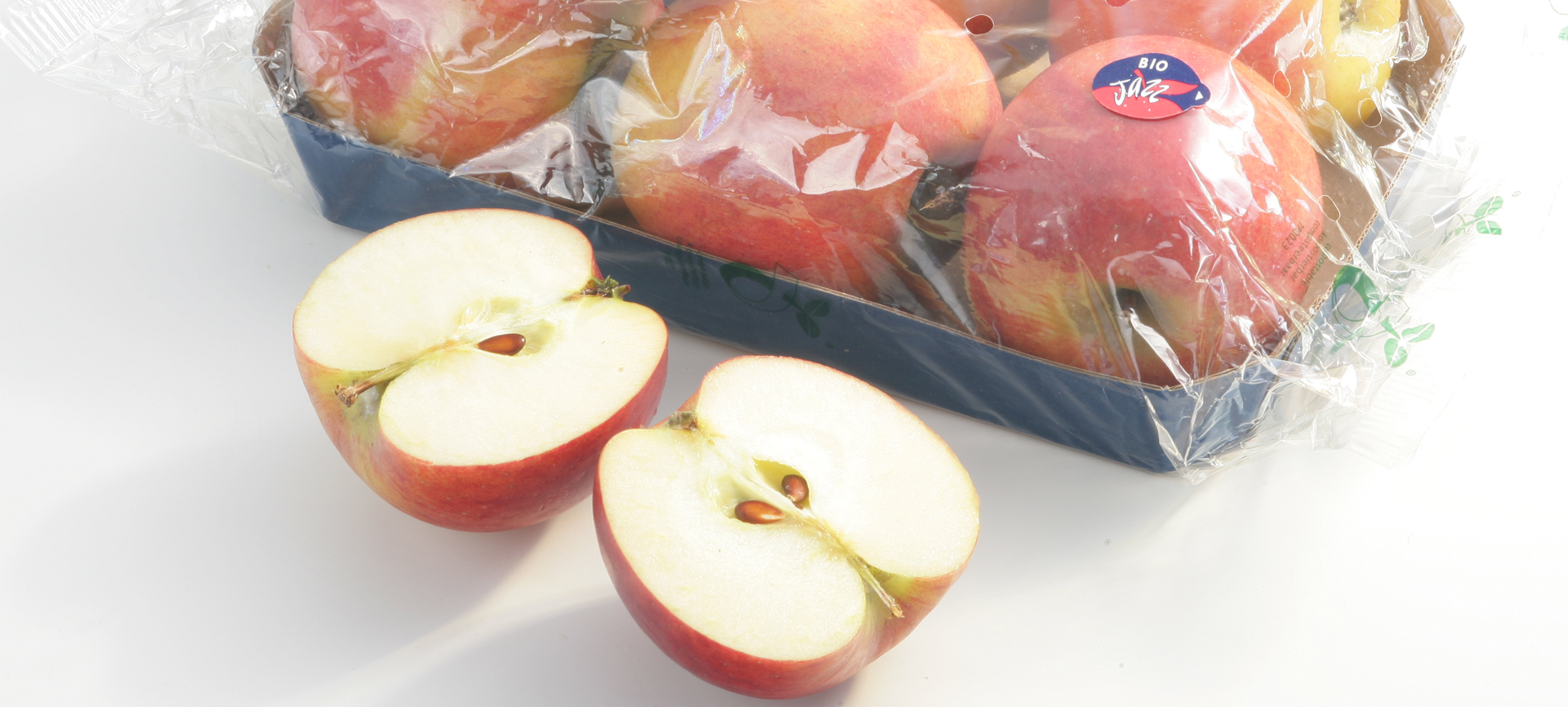Innsbruck University
Near-infrared method
Quality parameters:
Sugar content in Golden Delicious apples could be predicted with an accuracy of +- ? °Bx by NIR spectroscopy method.
Fruit flesh firmness of Golden Delicious apples could not be predicted in a satisfactory accuracy by NIR spectroscopy method.
Origin:
separation of 160 GD apples cultivated in 16 regions located in the Alpine area towards 120 samples originated in 12 different countries was possible performing PCA clustering of the NIR data derived from the surface scanning procedure.
| Golden Delicious | Pink Lady | |
|---|---|---|
| sugar content | +- 0,46 °Bx (SECV) | +- 0,45 °Bx (SECV) |
| acidity | +- 0,55 g/L malic acid (SECV) | +- 0,43 g/L malic acid (SECV) |
| ployphenol- content | +- 0,17 % gallic acid equivalents of dry matter (SECV) | +- 0,22 % gallic acid equivalents of dry matter (SECV) |
Bozen University
Isotope method
In this study, Isotope-Ratio Mass Spectrometry was utilised to determine the isotopic relationships of carbon (δ13C) and nitrogen (δ15N) in samples of apples in order to determine their geographic origin. For this study, we collected four varieties of apples (Golden Delicious, Gala, Granny Smith and Pink Lady) cultivated in four provinces of north Italy (Bolzano, Ferrara, Udine and Verona). Furthermore, this study was also performed on samples of Golden Delicious apples originating from foreign countries (India, Germany, South Africa, China, Russia and Japan).
Isotope analyses were performed on the apples themselves as well as on their main fractions, including peel, seeds and pulp (see figure below); 640 fractions of apples were analysed corresponding to a total number of 160 samples.
Isotopic values of carbon (δ13C) and nitrogen (δ15N) obtained were elaborated using multivariate statistical analysis, allowing us to construct models able to predict the geographic origin of the samples. After isotopic analysis of the apple fractions, we observed that every geographic area presents sufficiently diverse values of carbon (δ13C) and nitrogen (δ15N), which allow for a bias among the samples. Thus, it was possible to determine the origin of samples obtained from the four provinces of north Italy.
In conclusion, statistical analysis of the values of δ13C and δ15N for Golden Delicious apple samples originating from different countries showed partial bias among samples allowing us to identify samples cultivated in different geographic areas. Additional studies have been aimed at determining the isotopic relationships of apple samples cultivated in varying altitudes and apple samples preserved in a controlled atmosphere.
Laimburg Research Centre
Wet chemical methods
The apple varieties Pink Lady and Braeburn were analysed for quality characteristics and contents at three different stages of ripeness. The quality parameters were determined for the harvest as well as after being stored for several months, resulting in a total of 6 measurement points being identified.
During storage the pH value of this variety increases slightly.
The consistency of the flesh deteriorates during storage, but can be maintained during storage if appropriate measures are taken.
The total sugar content remains constant during storage, the acidity decreases slightly.
Overall the values measured in the apples were consistent with those in previously published research results in existing literature.



